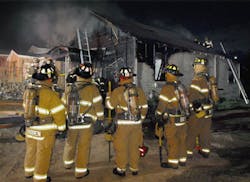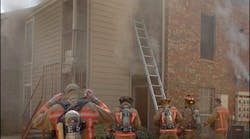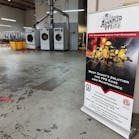When you establish a rapid intervention team (RIT) at an incident, they are there to perform a vital and technically challenging task.
As we all know, a RIT need not ever be activated and if they are well trained and utilized, they will still have performed several important tasks. The title of this piece is "Don't Relieve the Rapid Intervention Team" and I suggest this for several reasons.
First let's look at when you should relieve the RIT. When environmental conditions are severe, meaning extreme cold or heat, or any other condition that will wear down the ability of the RIT to react and operate immediately and at full effectiveness, they should be replaced or relieved. I strongly believe that should be the only reason to take a RIT out of their assignment.
The reasons I believe we should try to maintain the first and original RIT in place are as follows;
- Familiarity - The first RIT that arrives and assumes that responsibility will have the greatest knowledge of the past events of the fire or operation. They will have watched as the situation developed, they will have noted what companies were assigned to what areas and they will be generally familiar with the fire department operation and the building features.
- Tools - When a RIT is established, they generally bring their own set of RIT tools and equipment, lay them out or position them for rapid use and know what tools are there, how to use them and which should be carried in first if a firefighter needs assistance inside the structure. If a replacement or relief RIT assumes that role, it is highly unlikely they will carry an entire new set of tools and equipment and this will result in them being in a position where they may have to use tools that they are unfamiliar with. If they do bring their own tools we will have a growing and unnecessary pile of tools near the command post.
- Pre-action Duties - As stated earlier, the RIT does not sit on their hands waiting for a mayday. Instead, they perform a size-up, and could be asked to raise and position portable ladders, force and open grade level windows and doors that firefighters may need for escape, move about and view different areas of the building where units are operating and monitor the fireground radio for messages and transmissions that might indicate firefighters in trouble.
When we relieve or replace the RIT I believe that we dilute this base of knowledge, information and experience that the original RIT has developed and put into operation. Even a good exchange of information between two teams will leave much important information unsaid and not available for the continued operation of the RIT.
What do you think? Do you switch up RITs on the scene?








